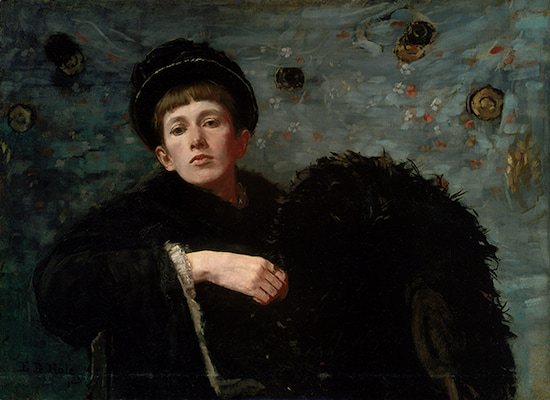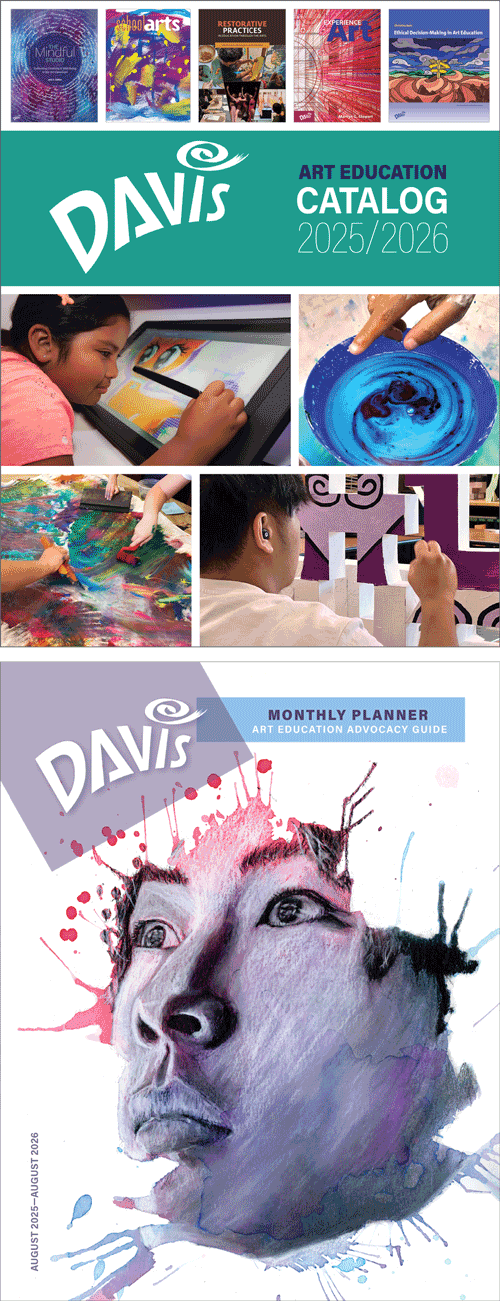Fiercely Independent: Ellen Day Hale
Out of nine children, Ellen Day Hale was the only daughter of the noted orator and author Edward Everett Hale (1822–1909). She came from a family filled with notable figures. Her great-great-uncle, Nathan Hale (1755–1776), was a Revolutionary War patriot and her great-aunt, Harriet Beecher Stowe (1811–1896), wrote Uncle Tom’s Cabin. Hale was a painter, printmaker, and art historian who worked well into her 80s.
 |
| Ellen Day Hale (1855–1940, United States), Self-Portrait, 1885. Oil on canvas, 28 ½" x 39" (72.4 x 99.1 cm). © 2025 Museum of Fine Arts, Boston. (MFAB-244) |
The androgynous nature of this self-portrait, with the aloof stare and fashionable clothing, speaks of Hale’s independence and status as both a woman and an accomplished artist. This work has an affinity to portraits by Impressionist Claude Monet (1840–1926), whose figures are composed with more defined form in the features, but a similar amorphous, fluid background. Hale’s forthright presentation, strong dark colors, and direct gaze also recall the work of one of the French painters she most admired, Édouard Manet (1832–1883). Manet was known for his confrontational images, which were strongly painted without subtle nuances of light and shadow. Such bold qualities were considered masculine, and therefore unsuitable for a woman to display in her artwork. That obviously did not concern Hale.
It was difficult for women to get professional art instruction during the 1800s in the United States. They often relied on relatives for training in the arts. Starting in the 1850s, however, several vocational schools were established by and for women, teaching printmaking, illustration, textile and furniture design, and other useful trades. Until the Civil War (1860–1865), a great number of American women migrated to Europe, where they had better access to education in the arts. These women, who formed artists colonies in cities such as Rome and Paris, proved that women could achieve their goal of becoming artists, despite the still-prevalent perception among male artists that it was “unfeminine.”
Born in Worcester, Massachusetts, Hale was one of the few professional women artists active in the United States in the late 1800s. Encouraged by her parents to pursue a career as an artist, she studied painting in Boston from 1873 to 1879 and at the Pennsylvania Academy of Fine Arts in 1878. She studied in Paris from 1881 to 1885 under several academic painters, where she was also exposed to the work of the Realist Barbizon and Impressionist painters. These two movements influenced Hale’s early painting style. Photography influenced her later paintings, when her style became tighter and more concerned with plasticity and value ranges to create sculptural form.
In the late 1870s, Hale began giving private painting lessons, while also exhibiting in the United States and Europe. In 1885, she learned etching from her life partner, Gabrielle de Veaux Clements (1858–1948), and made a living by selling her prints of European scenery. Hale wrote several articles about art. In 1888, she published her seminal book, History of Art, a study of the masters of the Italian and German Renaissance.
Correlations to Davis programs: Explorations in Art 2E Grade 1: 2.1; Explorations in Art 2E Grade 2: 2.3; Explorations in Art 2E Grade 3: 1.1; Explorations in Art 2E Grade 6: 1.2; A Global Pursuit 2E: 2.1; A Personal Journey 2E: 3.2, 6.4; Experience Art: 1.1; Exploring Painting 3E: pp. 104–105; Davis Collections: LGBTQ+ Artists; Davis Collections: Artist Self-Portraits

Comments